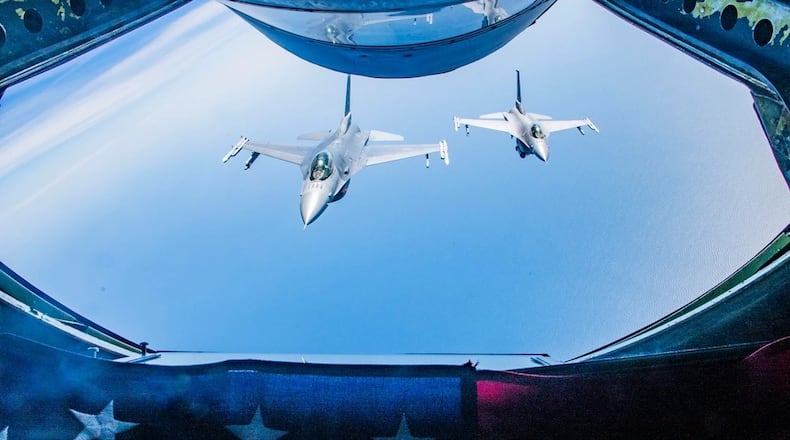“Marcus and I walk down the hall and talk to each other,” said NASIC commander Col. Kenneth Stremmel, referring to Col. Marcus Starks, his counterpart and the commander of NSIC. “I tell you, the collaboration happens every day. And it’s because of the threat. The threat doesn’t necessarily draw clean lines for us.”
Both spoke Tuesday at the Ohio Defense and Aerospace Forum at Wright State University.
Still, there can be hurdles. Even with a new 255,000-square-foot Intelligence Production Complex III, with 980 workstations, 3D visualization capabilities and a host of other features, physical space can still be cramped, and “overclassification issues” can inhibit cooperation at times, Starks said.
Starks and Stremmel were joined by retired Gen. T. Michael “Buzz” Moseley, the 18th Air Force chief of staff, and Coast Guard Rear Adm. Jon Hickey on the panel examining the national defense landscape.
Mosely, who served as the Air Force’s top officer from September 2005 until July 2008, said he saw a Middle East that was “on fire,” Europe’s first land war since the Second World War and a China that was becoming “much more assertive and aggressive.”
The “nexus” of all of that is China, Russia, Iran and North Korea, he said.
“The neighborhood is a dangerous neighborhood,” Moseley said.
In that environment, freedom of access to and in space ― and on the seas — was more important than ever, Starks and Hickey agreed.
“Our military has become increasingly, almost more than ever, dependent on space,” Starks said. “To that degree, we have a no-fail mission.”
Stremmel warned that China has the largest arsenal of hypersonic weapons, weapons that can strike ships, bases and planes.
Moderator Joe Zeis, a 26-year Air Force veteran familiar with Wright-Patterson and Gov. Mike DeWine’s aerospace and defense advisor, sought Moseley’s thoughts on how the United States might regain the capability to wage two major wars simultaneously.
Among Moseley’s suggestions: Nurture partnerships with allies, build more Navy ships and submarines, as well as Coast Guard Legend-class cutters, get a tanker for the Air Force “that works” and push the Army to 500,000 soldiers.
In particular, Moseley said the F-35 needs an engine that offers more thrust and range, as well as more power for sensors.
The two-day Ohio Defense and Aerospace Forum wrapped up Tuesday afternoon. A staff member for U.S. Rep. Mike Turner, one of the event’s organizers, said Turner was “singularly focused on a family emergency” and could not attend the event. He was not more specific about the emergency.
Turner was looking forward to attending next year’s forum, his office said.
About the Author



